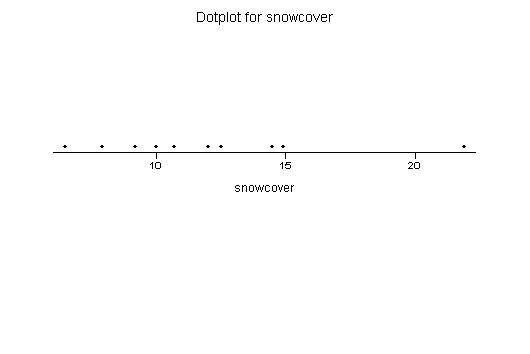![]()
Solution: In minitab, I did a dotplot (see description in the book; a sample of size 10 is too small for a histogram). The plot was saved as a *.jpg file (from the File menu, I selected ``Save Plot as ...''). This is shown below.

The descriptive statistics were computed in minitab (Stat menu
![]() Basic Statistics
Basic Statistics ![]() Display Descriptive
Statistics) and are given below (I used the ``Save Session Window
as ...'' selection from the file menu):
Display Descriptive
Statistics) and are given below (I used the ``Save Session Window
as ...'' selection from the file menu):
Worksheet size: 5000 cells Macro is running ... please wait Descriptive Statistics Variable N Mean Median TrMean StDev SE Mean snowcove 10 12.01 11.35 11.46 4.39 1.39 Variable Minimum Maximum Q1 Q3 snowcove 6.50 21.90 8.88 14.60
Because of the outlier, I would say the Median of 11.35 or Trimmed Mean of 11.46 (which are almost the same) would be a better representative value than the mean of 12.01. My preference is the Median as it is more widely used and easier to explain.